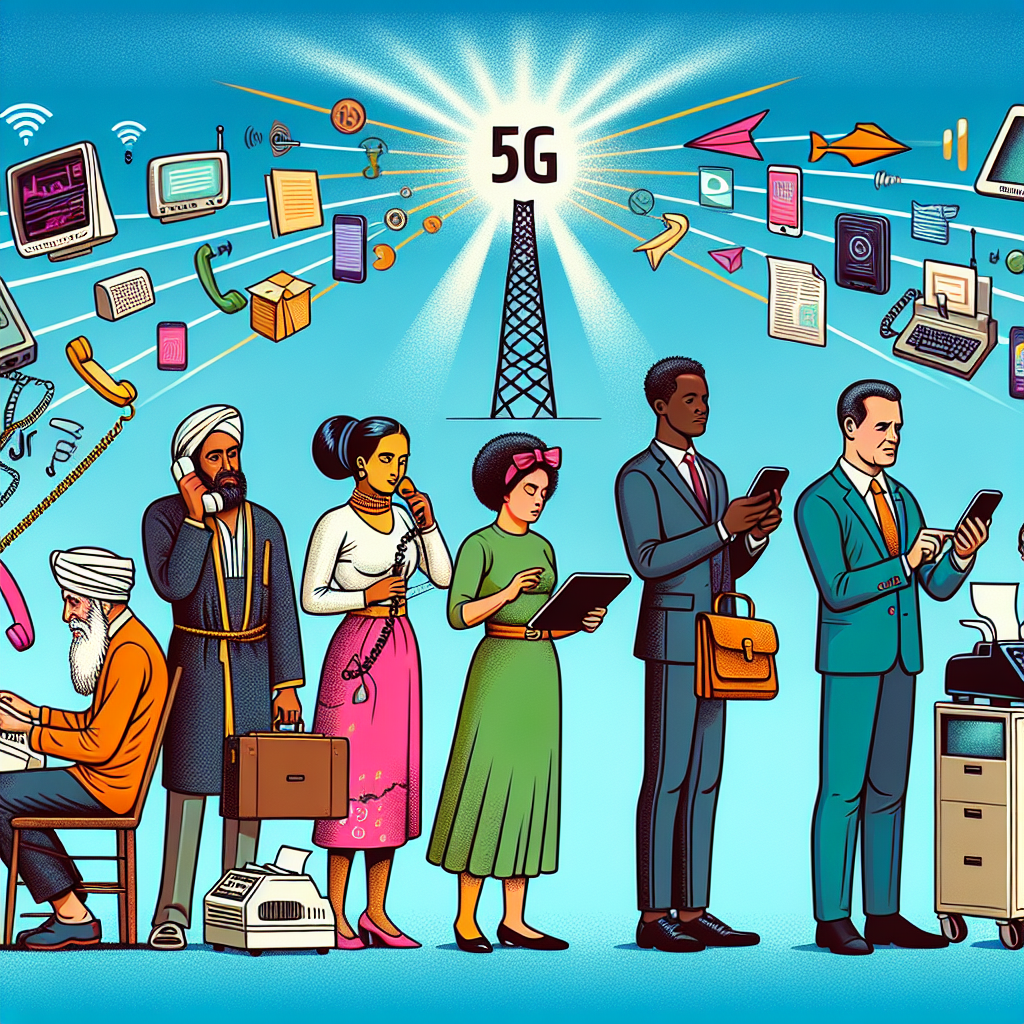Introduction to 5G Technology
The advent of 5G technology signifies a monumental leap in the realm of communication. Not only does it promise faster speeds and lower latency, but it also paves the way for groundbreaking advancements across various industries. In this article, we will delve into how 5G is transforming communication, its potential applications, and its overall impact on society.
The Evolution of Mobile Networks
From 1G to 4G
Mobile communication has come a long way since the introduction of 1G in the early 1980s. Each generation introduced new capabilities:
- 1G: Analog voice communication with limited coverage and high costs.
- 2G: Digital voice communication, better coverage, and the introduction of text messaging.
- 3G: Enhanced data capabilities, allowing for mobile internet access and video calling.
- 4G: High-speed internet, enabling seamless streaming, online gaming, and more.
The Arrival of 5G
With the arrival of 5G, we are entering an era of unprecedented connectivity. 5G technology boasts three major advancements:
- Enhanced Mobile Broadband (eMBB): Significantly faster internet speeds compared to 4G.
- Ultra-Reliable Low-Latency Communication (URLLC): Near-instantaneous data transfer with minimal delays.
- Massive Machine-Type Communication (mMTC): Capability to connect a vast number of devices simultaneously.
How 5G is Revolutionizing Communication
Speed and Efficiency
One of the most notable features of 5G is its incredible speed. With download speeds reaching up to 10 Gbps, 5G is approximately 100 times faster than 4G. This improvement allows for:
- Instant File Transfers: Large files can be transferred in a matter of seconds.
- High-Quality Streaming: Buffer-free streaming of 4K and 8K videos.
- Enhanced Mobile Experiences: Smoother gaming and augmented reality (AR) experiences.
Low Latency
Latency refers to the delay between sending and receiving data. 5G technology reduces latency to as low as 1 millisecond, enabling:
- Real-Time Communication: Seamless video calls and online multiplayer gaming without lag.
- Autonomous Vehicles: Enhanced safety and responsiveness for self-driving cars.
- Remote Surgery: Surgeons can perform complex procedures from miles away with zero lag.
IoT and Smart Cities
The proliferation of the Internet of Things (IoT) is another area where 5G is making a significant impact. With its mMTC capabilities, 5G can support a massive number of connected devices, enabling:
- Smart Homes: Seamless integration of smart appliances and home automation systems.
- Smart Cities: Efficient traffic management, energy distribution, and public safety systems.
- Industrial IoT (IIoT): Enhanced automation and real-time monitoring in manufacturing and production lines.
Applications of 5G Across Industries
Healthcare
5G is poised to revolutionize healthcare with its low latency and high reliability. Key applications include:
- Telemedicine: High-definition video consultations, remote monitoring, and real-time data transfer.
- Remote Surgery: Surgeons can operate on patients in different locations using robotic systems.
- Wearable Devices: Continuous monitoring of vital signs and immediate alerts for any anomalies.
Entertainment
The entertainment industry will also benefit significantly from 5G technology:
- Immersive Experiences: Enhanced AR and virtual reality (VR) experiences for gaming and entertainment.
- Live Streaming: High-quality, buffer-free live streaming of events and concerts.
- Cloud Gaming: Play high-end games on any device without the need for expensive hardware.
Education
Education is another sector where 5G technology can make a substantial impact:
- Virtual Classrooms: Interactive and immersive online learning experiences.
- Access to Resources: High-speed internet access for students in remote areas, bridging the digital divide.
- Advanced Research: Real-time collaboration and data sharing among researchers worldwide.
Challenges and Future Prospects
Infrastructure Development
One of the biggest challenges in the widespread adoption of 5G is the development of the necessary infrastructure. Deploying 5G requires significant investment in:
- New Hardware: Installation of 5G-compatible towers and small cells.
- Fiber Optic Networks: Enhanced data backhaul to handle increased traffic.
- Regulatory Approvals: Meeting governmental and environmental regulations.
Security Concerns
With the increase in connected devices, security becomes paramount. 5G networks must address:
- Data Privacy: Protecting user data from breaches and unauthorized access.
- Network Security: Mitigating risks of cyber-attacks and ensuring robust security protocols.
- Device Security: Ensuring the security of all connected devices in the network.
Global Implementation
The global rollout of 5G varies by region. Developed countries are leading the charge, while developing nations are gradually catching up. The future of 5G promises:
- Global Connectivity: Bridging the digital divide and providing high-speed internet access to underserved regions.
- Innovation: Driving innovation across industries, from healthcare to transportation.
- Sustainability: Enabling smart solutions for environmental sustainability and resource management.
Conclusion
In conclusion, 5G technology is set to revolutionize communication and transform various industries. With its faster speeds, lower latency, and ability to connect a multitude of devices, 5G will pave the way for new applications and experiences that were previously unimaginable. While challenges remain in terms of infrastructure and security, the future of 5G looks incredibly promising, heralding a new era of global connectivity and innovation.

